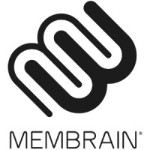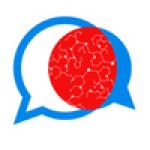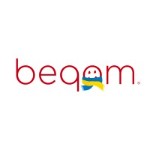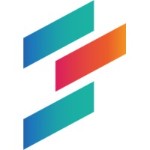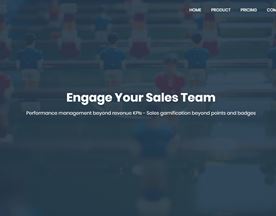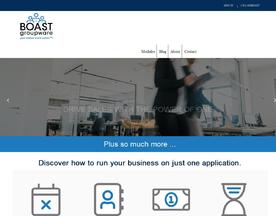What is bant? BANT is an acronym that stands for Budget, Authority, Need and Timing. It is a structured sales process with four criteria, used to qualify sales leads in order to determine the best course of action for pursuing them as potential customers.
The acronym is often used interchangeably with other terms such as BABN (Budget, Authority, Business Need, and Timeline) or just plain BAN (Budget and Authority). It is also similar to the MEDDIC framework, which uses the Decision process, understand the decision criteria that prospects follow to finalize a purchase; Identify pain: uncover the pain points or challenges that your prospects are facing & Champion: Find someone who can act as an advocate for your company. Equipping your sales team and sales reps with tools and frameworks like BANT, GPCT, MEDDIC or SPIN ensure that they can affect the customer’s decision making process.
What Does BANT Do?
BANT helps sales and marketing teams identify qualified opportunities in the early stages of the sales cycle by assessing a potential customer’s budget, authority level, need for a product or service, and timeline for making a purchase. By focusing on these four BANT criteria, sales teams can determine which leads should be pursued and make better use of their time.
Brief history of BANT
The BANT sales framework was first developed in the 1950s by IBM and has been widely adopted as a tool to help salespeople qualify prospects and leads and convert more prospects into customers. While it is still commonly used today, there are variations such as BABN that allow for more flexibility when assessing potential clients.
What Are the Components of BANT?

Budget
The first component of BANT deals with the customer’s budget. What is the customer willing to spend on a product or service and can they afford it? This helps salespeople determine whether a potential customer is worth pursuing.
1. How to determine a budget
When determining a dedicated budget, salespeople should look at the customer’s current spending patterns and figure out how much they could feasibly spend on your product or service. Additionally, they can assess the competition and see what similar products or services are being offered at different price points.
2. The importance of budget in the BANT framework
The budget is an important part of the BANT framework because it helps salespeople determine whether a potential customer is worth pursuing. If a customer’s budget doesn’t match the cost of your product or service, then it’s unlikely that they will be interested in making a purchase. What is your expected ROI? You can overcome the price obstacle by asking about the prospect’s expected ROI. If that aligns with your price, you have good reason to qualify the prospect on budget. Additionally, if their budget is too low, it could spell trouble for your business.
By assessing the budget of a potential customer, salespeople can determine whether or not they should pursue them as a viable lead.

Authority Level
The second component of BANT deals with the customer’s authority level. What kind of decision-making power does the customer have when it comes to making a purchase? Does one individual make all the decisions, or are there multiple stakeholders involved? This helps salespeople determine who they should be speaking with in order to get a deal done.
1. Identifying the decision maker
When assessing the authority level of a potential customer, salespeople should try to identify who has the power to make the final purchasing decisions. Depending on the organization, this could be an individual (e.g. CEO) or multiple people (e.g. board of directors).
2. Understanding the role of authority in the BANT framework
The authority level of a potential customer is an important part of the BANT framework because it helps salespeople know who they should be speaking with in order to get a deal done. If there are multiple decision-makers involved, then salespeople need to make sure they reach out to all of them in order to ensure that everyone is on board with the decision process.

Need
The third component of BANT deals with the customer’s need for a product or service. What problem is the customer trying to solve and how can this product or service help them? Knowing the customer’s needs helps salespeople quickly identify qualified leads and focus their time on pursuing only those prospects.
1. Identifying the customer’s needs
When assessing the need of a potential customer, salespeople should ask questions about their current situation and problem. What is the customer trying to accomplish and how can your product or service help them?
2. Understanding the role of need in the BANT framework
The need is an important part of the BANT framework because it helps salespeople quickly identify qualified leads and focus their time on pursuing only those prospects. By understanding what problems a customer has, salespeople can tailor the pitch to address their specific needs and increase the likelihood of making a sale.

Timing
The fourth and final component of BANT deals with the customer’s timeline for making a final purchase decision. What is the customer’s timeline for making a decision? Are they ready to buy now or are they just gathering information? How urgent is it for the prospect to make a purchase?
1. Determining the customer’s timeframe
When assessing the timing of a potential customer, salespeople should ask questions about their timeline. What is the customer’s deadline for making a decision? Are they ready to buy now or are they just in the research phase?
2. Understanding the role of timeframe in the BANT framework
The timing is an important part of the BANT framework because it helps salespeople assess whether or not they should invest their time in a potential customer. Knowing the customer’s timeline for making a decision can help salespeople determine if they need to move quickly and focus on closing the deal, or if they have more time to nurture the relationship.
How to use BANT
Using BANT in the sales process and buying process
1. Qualifying leads with BANT
When assessing leads, use the BANT framework to quickly identify qualified prospects and focus your time on pursuing only those. Ask questions about their budget, authority level, needs and timeline for making a decision. This will help you better prioritize your time and ensure that you’re focusing on the leads most likely to convert into paying customers.
2. Tailoring the pitch
Once you’ve identified qualified leads, tailor your pitch to address their specific needs and increase the likelihood of making a sale. Make sure you understand what problems they have and how your product or service can help them solve it.
3. Closing the sale
Finally, understanding the customer’s timeline for making a decision can help you determine if you need to move quickly and focus on closing the deal, or if you have more time to cultivate the relationship.
Using BANT in customer service
1. Addressing customer complaints
When dealing with customer complaints, use the BANT framework to understand what problem they have and address it. Make sure you assess their budget, authority level and timeline for making a decision so that you can better prioritize your time and ensure that you’re focusing on the customers most likely to be satisfied.
2. Addressing customer requests
When addressing customer requests, use the BANT framework to better understand what they need and how your product or service can help them. Make sure you assess their budget, authority level and timeline for making a decision so that you can provide the best possible solution.
Conclusion

In conclusion, the BANT framework is a great tool for both sales and customer service. By understanding the customer’s budget, authority level, needs and timeline for making a decision, you can quickly identify qualified leads or requests and focus your time on addressing only those.
A sales rep can use the BANT lead qualification process to weed out inadequate prospects and instead focus on leads who have a high probability of making a purchase
This enables you to prioritize your time more effectively and guarantee that you are targeting the customers who are most likely to be content.
Ultimately, understanding the BANT framework can help you close more sales, foster better relationships with your customers and improve overall customer satisfaction. So be sure to use it in your next sales process or customer service strategy.
Find: The Best Sales Software in the Serchen Marketplace



